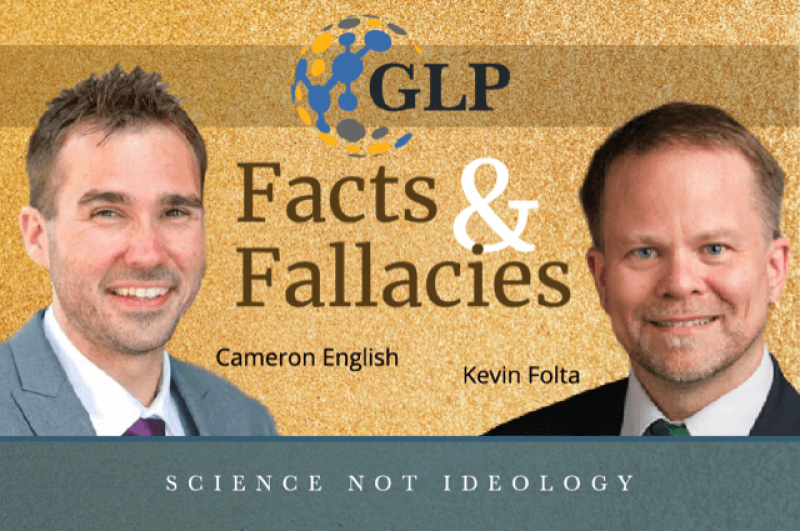Podcast:
Podcast: Play in new window | Download
Subscribe: RSS
Video:
Join geneticist Kevin Folta and guest host Michelle Horning on episode 205 of Science Facts and Fallacies as they break down these latest news stories:
Cystic fibrosis (CF) affects some 10 million people, claiming many of their lives at an early age. It’s one of the most common genetic disorders in the US and very difficult to treat; so far, no effective therapies have emerged. But that raises an important question: why does the defective gene behind the disease persist in the human genome? Some evidence suggests that the carriers may have enhanced resistance to other conditions, which could extend their lives under the right circumstances. The good news is that scientists are developing a treatment based on phage therapy, deploying viruses that literally eat harmful bacteria. The therapy targets one of the main causes of serious complications in CF, recurrent infection of the lungs. Will this treatment survive clinical trials and begin saving lives?
$130 million over 13 years. That’s what it can cost to develop and commercialize a new crop variety. In order to recoup that investment, patent protection ensures that only the developer can sell the new crop variety for two decades. That makes some economic sense, but it also means that farmers have to pay higher prices for seed. When you factor in the added expense of regulation, seed prices can reach stratospheric levels—sometimes increasing by 700 percent. This can cause downstream effects, including tight margins for growers and higher consumer food prices. Can anything be done to reform the regulatory environment to cut seed prices?
Europe is well known for its idiosyncratic plant-breeding regulations. For example, getting a precisely modified, transgenic (“GMO”) crop approved for cultivation in the EU is near-impossible, yet plant varieties produced via mutagenesis—exposing plants and seeds to radiation or harsh chemicals to damage their DNA—are lightly regulated in Europe. The EU’s Court of Justice recently reaffirmed this dichotomy in European law. Both breeding methods are perfectly safe to employ, so why does the EU regulate them differently?
Listen to the podcast here: https://tinyurl.com/33kj5wvh
Kevin M. Folta is a professor, keynote speaker and podcast host. Follow Professor Folta on Twitter @kevinfolta michelle horning
Cameron J. English is the director of bio-sciences at the American Council on Science and Health. Visit his website and follow ACSH on Twitter @ACSHorg































